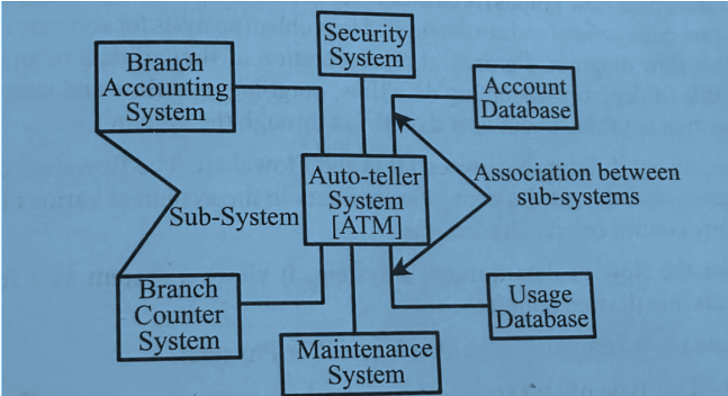- Software Requirements
- Functional And Non-Functional Requirements
- User Requirements
- System Requirements
- Interface Specification
- software requirements document
- Requirements Engineering Process
- Feasibility Studies
- Requirements Elicitation And Analysis
- Requirements Validation
- Requirement Management
- System Models
- context model
- Behavioral Model
Context model
Definition
Context model
“Context Model is an architectural model which describes environment and boundary of the system.”
Description
Architectural models describe the environment of a system. However, they do not show the relationships between other systems in the environment and the system that is being specified.
External systems might produce data for or consume data from the system. They might share data with the system; they might be connected directly, through a network, or not connected at all. They might be physically co-located or located in separate buildings. All of these relations might affect the requirements of the system being defined and must be taken into account.
Simple architectural models are normally supplemented by other models such as process models which show the process activities supported by the system and data-flow models that show how data is transferred between the system and other systems in its environment. Hence context system model should be used in RE Process to show data is being transferred from one system to other systems boundary.
ATM context model example
The following diagram illustrates the context model of an ATM.
High level architecture models are usually expressed as simple block diagrams where each sub-system is represented by a named rectangle and lines indicate associations between sub-systems.
From the above figure we can see that each ATM is connected to:
An account database
A local branch accounting system
A security system to support machine maintenance
A usage database that monitors how the network of ATMs is used
A local branch counter system
This counter system provides services such as backup and printing.
